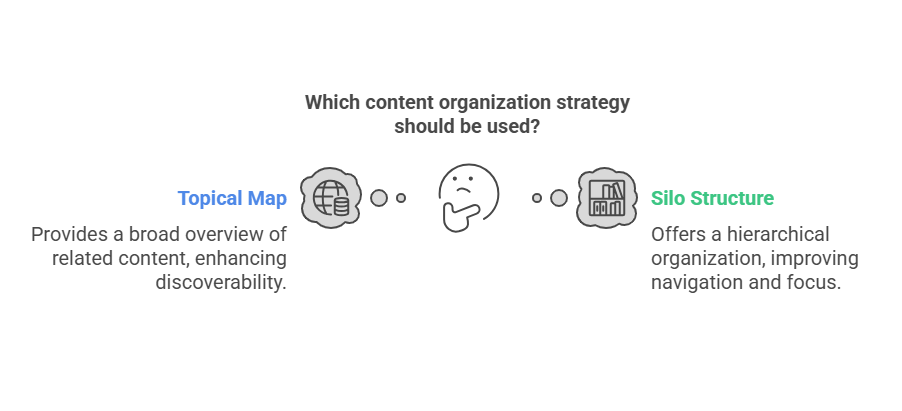
Understanding the Difference Between a Topical Map and a Silo Structure
Have you ever wondered how websites organize their content so you can find exactly what you’re looking for? Well, it’s not random! Two crucial concepts—topical maps and silo structures—help guide how websites are built and organized. Let’s break them down in a way that’s easy to understand.
What Is a Topical Map?
Think of a topical map as the big-picture plan for a website. It’s like creating a blueprint before building a house. A topical map lists all the topics and subtopics a website should cover. It helps ensure that the site has everything someone might want to know about the subject it focuses on.
Here’s an example: Imagine you’re creating a website about animals. Your topical map might include:
- Mammals
- Dogs
- Cats
- Birds
- Parrots
- Eagles
- Reptiles
- Snakes
- Lizards
The topical map doesn’t care how these topics are arranged on the site—it just makes sure all the important subjects are included.
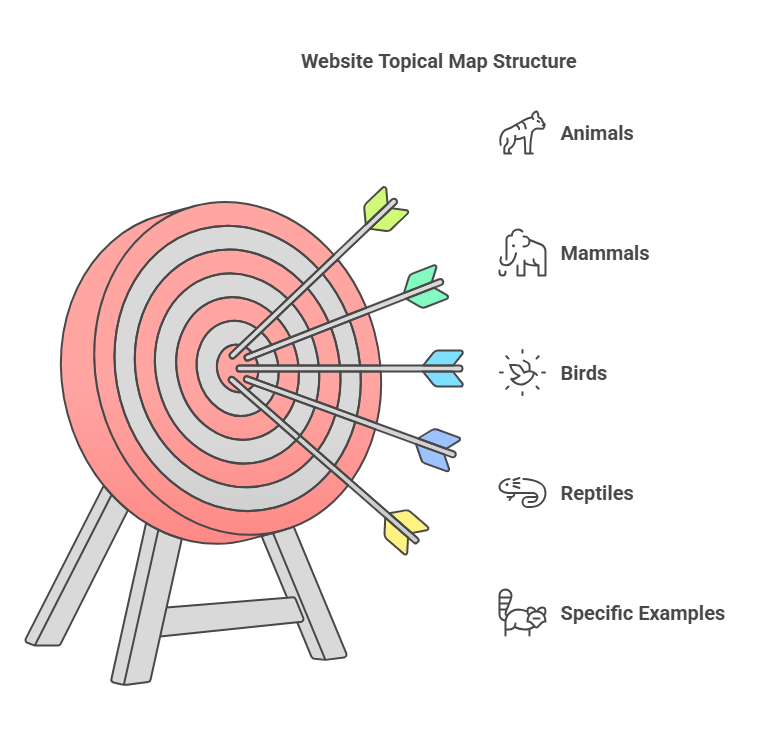
What Is a Silo Structure?
Now let’s talk about the silo structure. While the topical map is like the blueprint, the silo structure is like the walls, rooms, and floors of your house. It organizes the content into categories and subcategories, making it easy for people to find what they need.
For the animal website, the silo structure might look like this:
- Homepage
- Mammals (a main category)
- Dogs (a subcategory under Mammals)
- Cats
- Birds
- Parrots
- Eagles
- Reptiles
- Snakes
- Lizards
The silo structure decides how the website is laid out. It also affects how people navigate the site, the URL addresses (like www.animalsite.com/mammals/dogs), and the “breadcrumb trails” you see on some websites (e.g., Home > Mammals > Dogs).
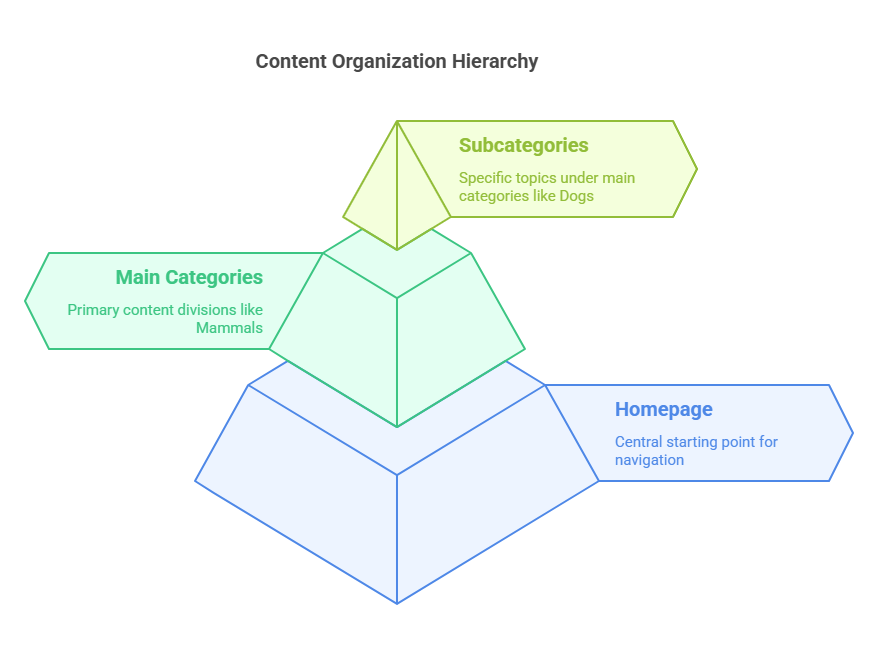
Key Difference: Topical Map vs. Silo Structure
The difference between a topical map and a silo structure is how they’re used:
- A topical map is like a brainstorming tool that covers every topic the website should have.
- A silo structure takes those topics and organizes them into categories to make the website easy to use.
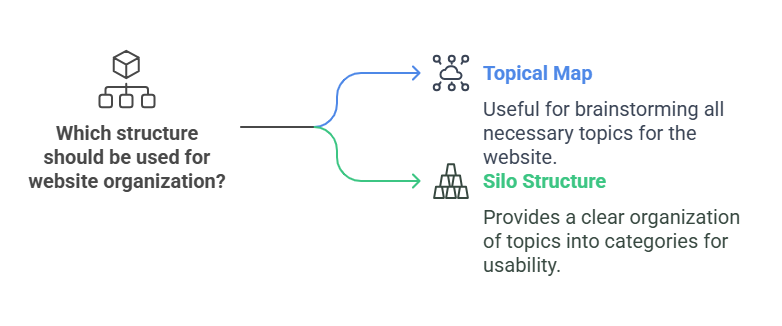
Which One Goes in the Menu?
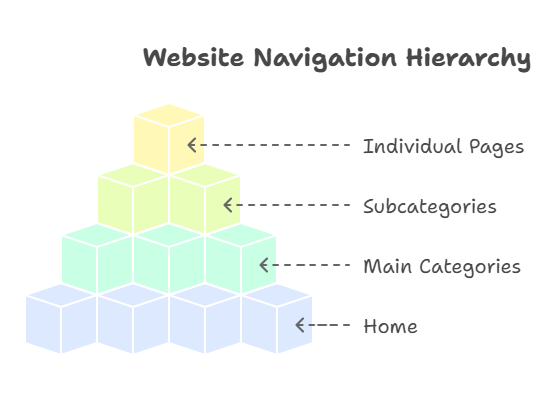
Here’s an important tip: when you look at the menu of a website, it’s the silo structure you’re seeing.
Why? Because the silo structure is all about making navigation simple and logical. For example, on the animal website, the menu might look like this:
- Mammals
- Birds
- Reptiles
Clicking on “Mammals” would take you to a page with links to “Dogs” and “Cats.” This setup helps visitors find their way without feeling overwhelmed.
Why Both Are Important
Imagine building a website without a topical map. You might forget to include key topics, like reptiles, altogether! On the other hand, if you didn’t have a silo structure, the site might feel messy and confusing, with no clear path to follow.
Using both ensures:
- The website covers every important topic (thanks to the topical map).
- The information is easy to find and navigate (thanks to the silo structure).
In Simple Terms
- A topical map is like a list of everything a website should discuss.
- A silo structure is how those things are organized into pages and categories so people can find them easily.
By working together, these two tools make websites both helpful and user-friendly.
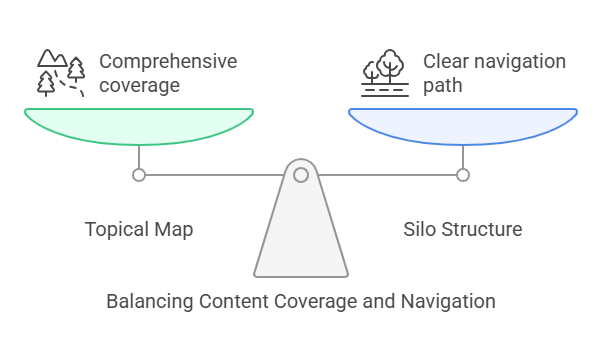
Why Should You Care?
Even if you’re not a web designer, understanding these concepts can help you recognize well-organized websites—and appreciate the work that goes into building them. Plus, you’ll know how to get started if you ever want to create your website!